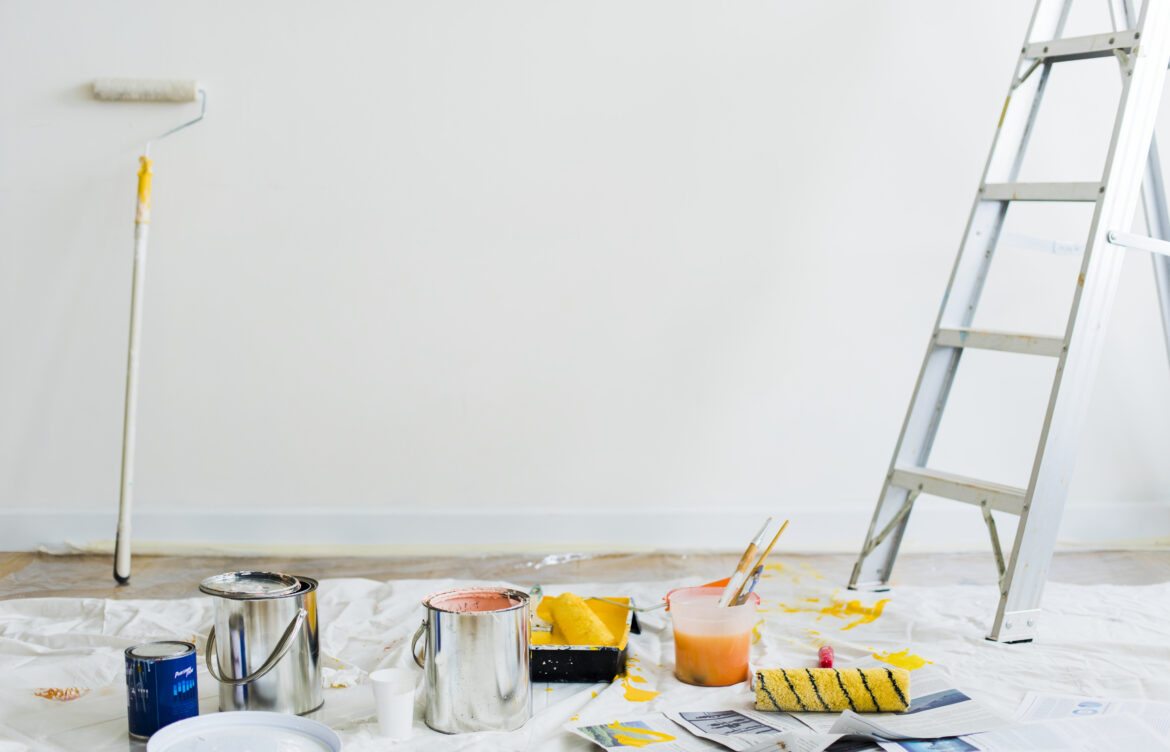
The Most Common Mistakes Beginners Make During Home Renovation
Ever look at a half-painted room, a tile saw still running in the background, and think, “This wasn’t supposed to be so hard”? If you’ve recently decided to take on a home renovation project, you’re not alone. Over the last few years, more people have picked up power tools and Pinterest boards in hopes of turning their spaces into something more functional, beautiful, or both. In this blog, we will share the most common mistakes beginners make during home renovation.
Getting Trapped by Aesthetics Without Planning for Function
In an age where design trends spread faster than bad internet takes, it’s easy to get caught up in what looks good on screen rather than what works in real life. Social media has romanticized renovations with time-lapse videos and glossy before-and-afters, rarely showing the chaos between demo and done. What’s often left out is how quickly style-first decisions can backfire when they ignore daily routines and basic functionality.
Choosing finishes before understanding how a space is used leads to regret. A white marble countertop may photograph beautifully, but it’s a magnet for stains if your kitchen doubles as a snack station for toddlers. Floor-to-ceiling open shelving may look sleek until you realize you hate dusting or don’t want everyone seeing your mismatched coffee mugs.
Even in more specific projects, function has to come first. For residents of Memphis, TN shower replacement choices are a good example of where new homeowners often prioritize visual upgrades without checking water pressure compatibility or drainage capacity. The result? A sleek new stall that floods your bathroom floor or takes forever to warm up. And in a city with hot summers and occasional water pressure quirks, skipping these details can lead to frustration fast.
The truth is, real value comes from blending form and function. Great design doesn’t just look good in photos—it feels right every day. And no design is so brilliant it can fix a layout that doesn’t make sense for how people actually live.
Underestimating the Scope—and the Budget
Optimism is great when buying throw pillows, but it doesn’t mix well with power tools and price quotes. One of the fastest ways a renovation derails is by underestimating how much time and money it will actually take. And with inflation still nudging material and labor costs higher, that spreadsheet you put together six months ago might already be outdated.
Beginners often assume that a DIY approach saves money across the board. But inexperience costs. Sometimes in the form of mistakes, other times in hiring someone to undo what was already done. A beginner tackling floor replacement might forget to factor in the cost of underlayment, disposal fees, or the reality that the subfloor is rotted and needs to be replaced. Suddenly a $2,000 budget jumps to $4,000 before the first plank is laid.
Then there’s the timeline trap. That long weekend you blocked off for a bathroom refresh can quickly stretch into a month if you hit supply delays or plumbing surprises. This isn’t just about inconvenience—it adds financial strain too. Every extra day off work or hotel stay counts. Beginners often overlook those hidden costs in their excitement to get started.
Planning for extra time and padding your budget by at least 20% isn’t pessimistic. It’s practical. And it’s the difference between finishing a project strong and walking away from it with a strained bank account and sore shoulders.
Ignoring Permits and Professional Input
In the age of online tutorials and confident YouTubers, it’s tempting to believe that professional guidance is optional. But even the most capable beginner needs to recognize where DIY ends and expert input begins. Failing to get permits for structural or electrical work doesn’t just risk fines—it can complicate resale, void insurance claims, and create serious safety issues.
Inexperienced renovators often assume that if they’re not knocking down a wall or installing a new roof, permits aren’t needed. But codes vary by city, and even something as seemingly minor as moving a plumbing fixture can require approval. When that gets overlooked, the consequences aren’t always immediate. Sometimes they show up during an inspection when you’re trying to sell the house, or when something fails and your insurance doesn’t cover it.
Professional input also goes beyond permits. Architects, contractors, and tradespeople offer insights that beginners don’t even know to ask about. Whether it’s how to properly ventilate a bathroom to prevent mold or how to distribute electrical loads safely, their expertise protects your investment—and your peace of mind.
Choosing Trends Over Timelessness
Trends can be seductive. One minute you’re researching practical flooring options, the next you’re debating whether sage green or matte black cabinets are the “right vibe” for 2025. There’s nothing wrong with embracing style, but making big decisions based entirely on what’s hot right now is risky—especially if resale value matters to you.
Homeowners new to renovation often want their spaces to look “current,” but current doesn’t last. What feels fresh today can feel tired tomorrow. Remember the all-gray-everything trend? It was sleek until it wasn’t. Now realtors are spending more time repainting those interiors just to get buyers through the door.
A better approach is to keep the bones of your space neutral and timeless—classic tile, natural wood tones, clean hardware—and layer personality through paint, fixtures, or textiles that are easier to update. That way, when trends shift (and they always do), your space can adapt without requiring a full teardown.
Buying Cheap, Thinking It’s “Good Enough”
Budget consciousness is smart. But cutting corners with low-quality materials or tools usually costs more in the long run. One of the most common missteps beginners make is choosing the cheapest option and hoping it holds up. Spoiler: It rarely does.
Laminate that peels at the edges. Faucets that rust within a year. Paint that never quite covers the old color, no matter how many coats you apply. These are the pitfalls of prioritizing price over performance. And unfortunately, they often show up just after the return window has closed.
It’s not about buying the most expensive product every time. It’s about understanding where quality matters. Spend more on structural elements that get daily use—things like flooring, plumbing fixtures, and cabinetry hardware. Save on trend-based touches like light fixtures or drawer pulls that can be swapped later.
Also, invest in the right tools. A cheap saw that can’t make straight cuts will waste materials and test your patience. Tools don’t have to break the bank, but they do need to function properly if you want a result that doesn’t scream “first try.”
Renovation is a learning process, but you can avoid the worst mistakes by approaching it with a blend of creativity, realism, and humility. If you start with a solid plan, stay honest about your limitations, and remember that patience is part of the payoff, your first project doesn’t have to be a cautionary tale. It can be the beginning of a space that actually reflects how you live—and where you’re heading.
